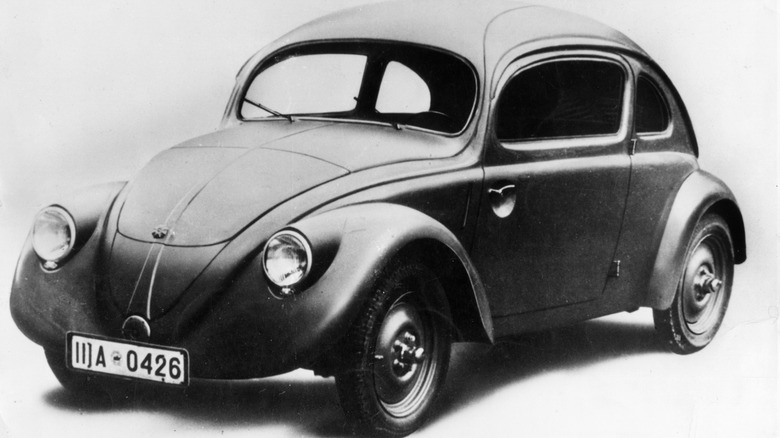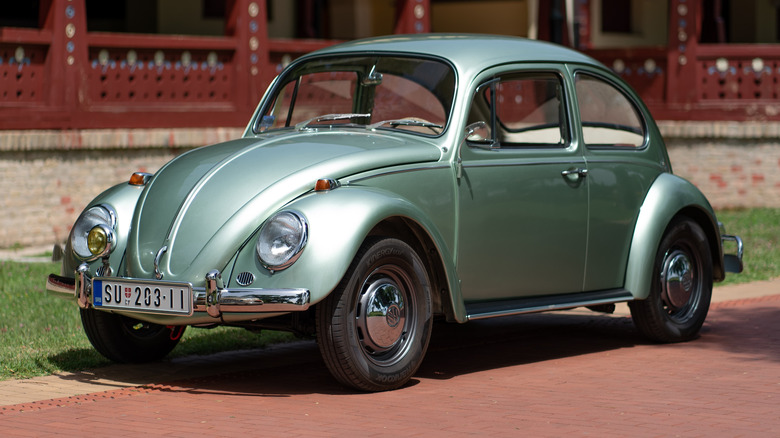No, Hitler Didn't Design The VW Beetle (But He Did Play A Role In Its Creation)
In the leadup to and throughout World War II, the Third Reich invented some crazy military machines. There were gigantic guns, massive tanks, and all sorts of planned vehicles of immense proportions that were never constructed. One vehicle that did come out of the conflict was the Volkswagen Beetle, which has a long and interesting history. It's widely believed that Adolf Hitler was responsible for its design, but this isn't wholly true. While Hitler was involved in its creation, he didn't sit at a drafting table and come up with the VW Beetle himself.
In his capacity as the German Chancellor, Hitler envisioned a car that was reliable and could support hard-working German families. He also wanted something affordable. To make that happen, the Hitler met with Ferdinand Porsche in 1934. He wanted a car with five seats capable of supporting two adults and three children, that was easy for an average German to maintain. It would be able to zip along the autobahn while being affordable for just about any worker pulling in an average salary.
In a way, the VW Beetle is the culmination of Hitler's idealized car, but it was fraught with issues related to its creation. Porsche helped design it, but Volkswagen was later dogged by claims that Porsche stole the design from a former employee, Erwin Komenda. Volkswagen ultimately won that suit in 2019 — 81 years after the VW Beetle was first produced. It became known as "The People's Car," and Volkswagen kept it around for decades but ultimately discontinued the Beetle, with the final model ceasing production in 2019.
The Volkswagen Beetle
Hitler met with Porsche about designing his people's car in the early '30s, so the Beetle's origins extend to before WWII began. Volkswagen began selling the car in 1938 as the KdF (Kraft durch Freude) Wagen, but when war broke out the following year, production halted. Before that happened, people outside of Germany were unwilling to support the Beetle, as it was too closely associated with Hitler and the Nazi party. Hitler personally laid the cornerstone for the new Volkswagen factory in Wolfsburg, Germany, so he was inextricably linked. This changed after the war, as British manufacturers took over the VW plant to begin making cars again.
They branded the vehicle the Volkswagen Type 1, and it began selling in and outside of Europe. During the 1960s, the brand really took off, and the Beetle became an iconic car owned and operated all over the world. By the time production of the original Beetle design ended in 2003, more than 21.5 million had been sold, making it the car with the longest production period (65 years), and it holds the distinction of having the most cars sold of any single platform. That's an impressive label for a car that is linked to the worst mass-murdering dictator in history.
Despite that history, the VW Beetle became a symbol of American counterculture, and new models were developed to expand the market. Volkswagen released a now incredibly rare 23-window bus model, and there were many others. In 1967, a Beetle competed in a race as a modified dune buggy. In 1998, the Beetle was redesigned with a more modern design. This was followed in 2011 with another upgraded design that favored the original look of the model created in the 1930s but with modern bells and whistles.

